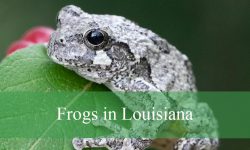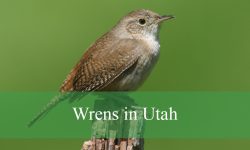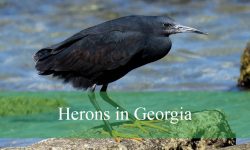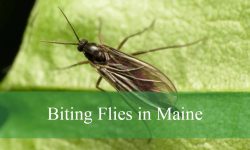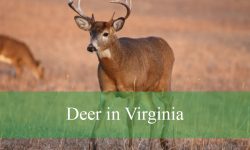Pennsylvania’s wide range of landscapes, including forests, open fields, wetlands, and mountain ridges, supports an impressive variety of hawk species. These birds of prey are powerful hunters and play an important role in keeping small animal populations in check across the state.
This guide introduces 10 types of hawks found throughout Pennsylvania. Each species is described in detail, with identification tips, hunting behavior, preferred habitats, and seasonal presence. Whether perched silently in a woodland or soaring high over farmland, each hawk brings its own unique traits.
Learning about the hawks in your region helps you recognize them more easily in the field. With the right knowledge and a little patience, spotting these raptors can become one of the most rewarding parts of spending time outdoors in Pennsylvania.
Species of Hawks Found in Pennsylvania
Red-tailed Hawk (Buteo jamaicensis)
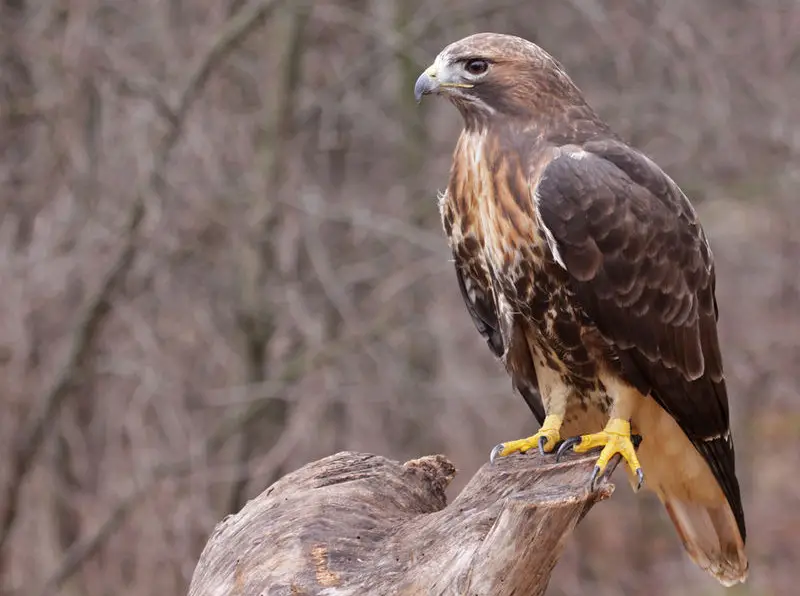
The Red-tailed Hawk is the most widespread and easily recognized hawk in Pennsylvania. It is a large raptor with broad, rounded wings and a short, wide tail that is famously reddish in adults. Juveniles lack the red tail and have a banded brown one instead. Their plumage varies but typically features a pale belly with a streaked band across it and a darker brown back and head. Adults measure between 18 to 26 inches in length with wingspans that can reach 4 feet or more.
These hawks are often seen soaring in wide circles high above open fields or perched on roadside poles and fence posts. They rely on keen eyesight to detect prey from a distance and are known for their distinctive, raspy scream—a call often used in movies to represent any bird of prey. Red-tailed Hawks are territorial and generally remain in the same area year-round in Pennsylvania, especially where suitable hunting grounds exist.
Red-tailed Hawks are opportunistic predators. Their diet includes rodents like mice and voles, rabbits, snakes, and even other birds. They hunt mainly by perching and scanning open areas, diving swiftly to capture prey with powerful talons. They are especially common in agricultural zones, meadows, and the edges of woodlands where prey is abundant.
These raptors are found throughout Pennsylvania in all seasons and are one of the first hawks new birders learn to identify. Fun fact: Red-tailed Hawks mate for life and often return to the same nest site year after year, building large stick nests high in trees or on cliffs.
Cooper’s Hawk (Accipiter cooperii)
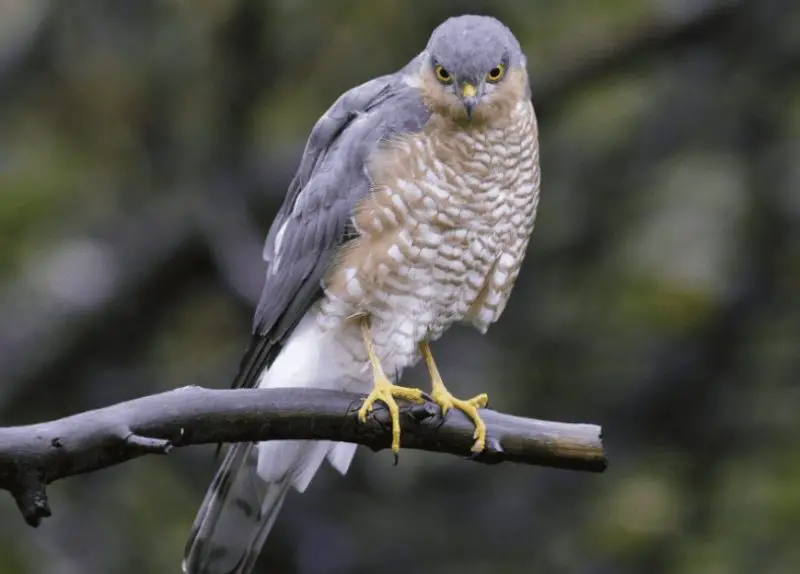
Cooper’s Hawk is a sleek, medium-sized raptor known for its agility in tight spaces. Adults have a steely blue-gray back, reddish barring on the chest, and a long, rounded tail with dark bands. Juveniles are brown with streaked underparts. It’s larger than the similar Sharp-shinned Hawk, typically measuring 14 to 20 inches in length with a wingspan up to 35 inches.
This hawk thrives in wooded environments and has adapted well to suburban neighborhoods with mature trees. Cooper’s Hawks are swift and stealthy, often surprising prey in mid-flight. They are especially agile hunters, capable of navigating through dense forest canopies with precision. Their flying style includes a few quick flaps followed by short glides.
Cooper’s Hawks primarily prey on small- to medium-sized birds such as doves, starlings, and robins, though they’ll also eat squirrels, chipmunks, and even bats. Backyard bird feeders can inadvertently attract these hawks, drawn not by the seed but by the birds gathering there. They pluck feathers from their prey before feeding.
In Pennsylvania, Cooper’s Hawks are found statewide, nesting in dense forests and increasingly in residential areas. Fun fact: They have been known to drown their prey by holding it underwater—a behavior not often seen in raptors.
Sharp-shinned Hawk (Accipiter striatus)
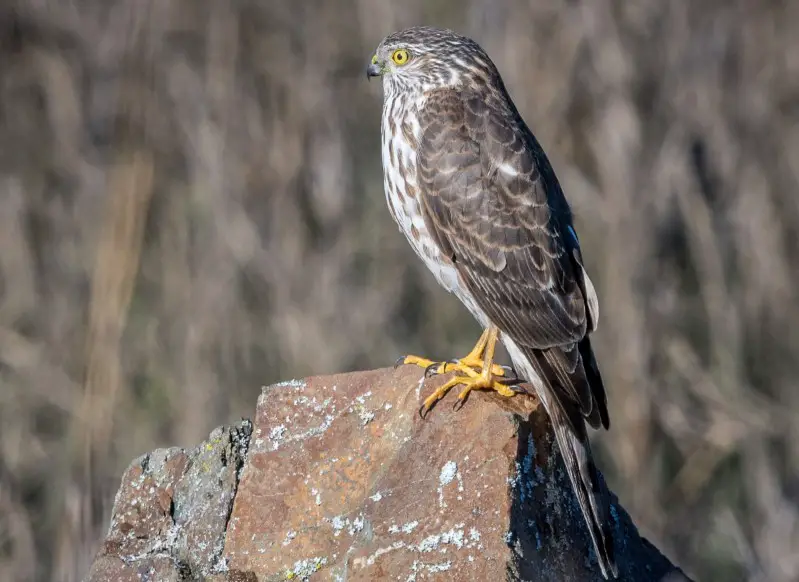
The Sharp-shinned Hawk is the smallest hawk in Pennsylvania, often mistaken for a Cooper’s Hawk due to similar markings. Adults have slate-gray backs, reddish-barred chests, and long square-tipped tails. Juveniles are brown with vertical streaks on their underparts. Their small size—about 9 to 13 inches long with a wingspan of 17 to 23 inches—makes them swift and nimble flyers.
These hawks specialize in ambush hunting and are most often seen darting through trees in pursuit of small birds. Their short, rounded wings and long tail allow them to maneuver rapidly through dense vegetation. In flight, they use several quick flaps followed by short glides, similar to Cooper’s Hawks but with faster wingbeats.
Their diet consists almost entirely of songbirds such as sparrows, warblers, and finches. Sharp-shinned Hawks are notorious for raiding backyard feeders during migration and winter months. Unlike larger hawks, they often pluck their prey while perched under cover before feeding.
Sharp-shinned Hawks breed in remote forested areas of northern and central Pennsylvania but are more commonly seen statewide during spring and fall migration. Fun fact: They are among the most frequently counted hawks at Pennsylvania’s famed Hawk Mountain Sanctuary during fall raptor migration.
Red-shouldered Hawk (Buteo lineatus)
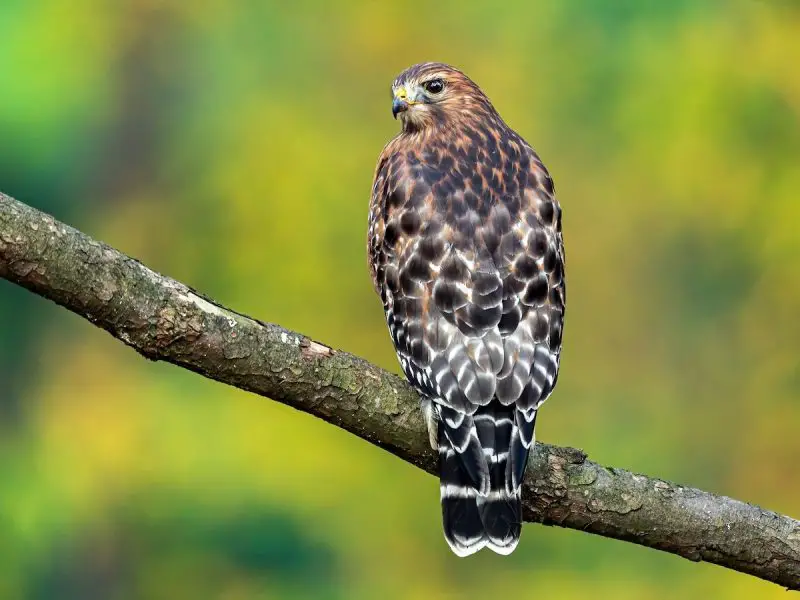
The Red-shouldered Hawk is a striking raptor with rich, reddish-orange barring on its chest and strongly patterned black-and-white wings and tail. As its name suggests, it has bold reddish coloring on its upper wing “shoulders,” visible when perched. Adults measure 16 to 24 inches long and have wingspans up to 48 inches. They are slightly smaller than Red-tailed Hawks but more colorful and vocal.
This hawk prefers mature deciduous forests, particularly near streams, wetlands, or swamps. It is more secretive than the Red-tailed Hawk and is often heard before it’s seen—its piercing “kee-rah” whistle is unmistakable and often repeated in a series. They soar high over the canopy or perch quietly in shady woods while scanning for prey.
Red-shouldered Hawks feed on a variety of prey, including frogs, snakes, small mammals, and birds. Their association with water-rich environments means amphibians make up a large part of their diet. They hunt both from perches and by soaring, often staying close to cover while patrolling their territory.
In Pennsylvania, they are most common in the southeast and along forested river valleys. Fun fact: Red-shouldered Hawks sometimes reuse the same nest year after year and will aggressively defend it from intruders, including humans.
Broad-winged Hawk (Buteo platypterus)
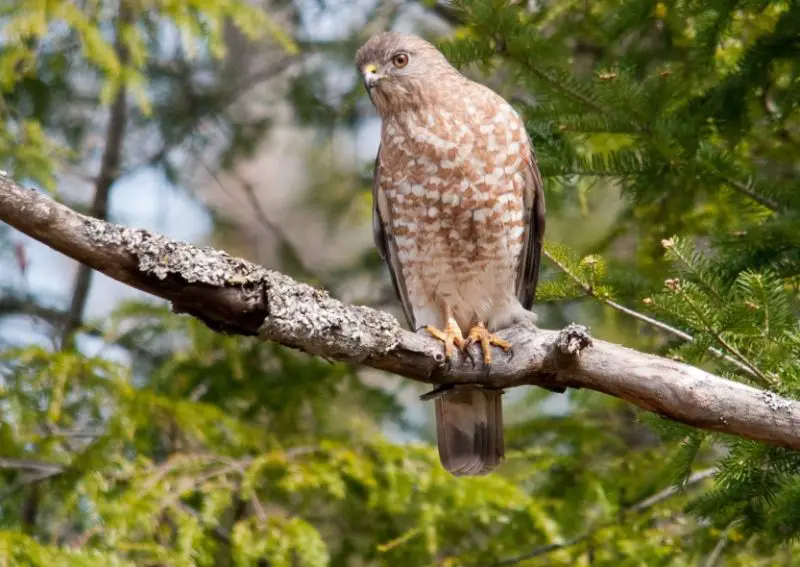
The Broad-winged Hawk is a compact, medium-sized hawk best known for its spectacular fall migration. Adults are brown above with a pale underside and broad horizontal bands on the tail. Their wings are relatively short and broad, giving them a stocky appearance in flight. They measure about 13 to 17 inches long, with wingspans around 33 inches.
Broad-winged Hawks are secretive during the breeding season and prefer large tracts of deciduous or mixed forest. They are rarely seen out in the open except during migration. In the summer, they perch quietly in the forest canopy, hunting frogs, insects, snakes, and small mammals. Their call is a high-pitched whistle, often heard echoing through wooded hillsides.
What sets them apart is their migration behavior. Every fall, thousands of Broad-winged Hawks form massive “kettles” as they ride thermals southward. These swirling groups can include hundreds or even thousands of birds, offering some of the most exciting hawk-watching in Pennsylvania, particularly at Hawk Mountain.
This species nests throughout the state but is easiest to observe during its September migration. Fun fact: Broad-winged Hawks travel over 4,000 miles to reach their wintering grounds in South America—one of the longest migrations among North American hawks.
Northern Harrier (Circus hudsonius)

The Northern Harrier is a distinctive, long-winged hawk known for its low, gliding flight style over open fields and marshes. Males are a pale gray with black wingtips, while females and juveniles are brown with streaked undersides and a characteristic white patch at the base of the tail—an excellent field mark. Adults measure around 18 to 20 inches in length, with wingspans reaching up to 48 inches.
Northern Harriers are one of the few hawk species that rely heavily on hearing as well as sight to hunt. They have a unique, owl-like facial disc that helps funnel sound to their ears, allowing them to detect prey in dense grasses. Their flight is buoyant and graceful, often seen gliding close to the ground with wings held in a shallow “V” shape. They prefer solitude and are usually silent while hunting.
Their diet mainly consists of small mammals like voles and mice, but they will also take birds, amphibians, and reptiles when available. Harriers build their nests on the ground, usually in tall grasses or marsh vegetation. Breeding in Pennsylvania is rare and typically occurs only in isolated wetlands or large grasslands, though they are more common as migrants and winter visitors.
In Pennsylvania, Northern Harriers are most often seen in winter and during migration across open farmlands and wildlife preserves. Fun fact: The male Northern Harrier may mate with multiple females in one breeding season and provides food to each while they incubate eggs and raise the young.
Rough-legged Hawk (Buteo lagopus)
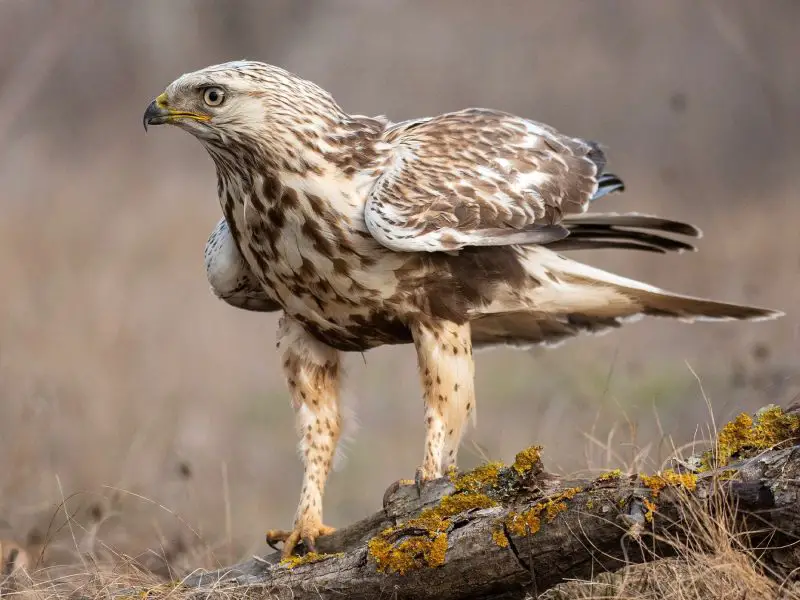
The Rough-legged Hawk is a striking winter visitor from the Arctic tundra, where it breeds during the short summer. Named for its feathered legs—an adaptation for cold climates—it is one of only two hawks in North America with fully feathered legs. This large buteo measures 18 to 24 inches long, with a wingspan up to 56 inches. Plumage varies, but most have dark belly bands and pale heads and tails, along with broad, square-tipped wings marked with dark patches at the “wrists.”
This hawk prefers wide, open landscapes and can often be seen hovering in place like a kestrel while searching for prey. It is less aggressive than other raptors and typically hunts by scanning fields from poles or slow flight. Its behavior and flight patterns are slower and more deliberate compared to other large hawks.
Rough-legged Hawks feed mostly on rodents, especially voles and mice, making them beneficial for controlling pest populations in rural areas. During migration and winter, they frequent open country such as farmlands, reclaimed strip mines, grasslands, and even airports. They do not breed in Pennsylvania, arriving only for the cold months between November and March.
These hawks are more common in northern and central Pennsylvania during the winter. Fun fact: Unlike most hawks, Rough-legged Hawks can breed in the harsh Arctic Circle, often nesting on cliffs or large rock outcroppings in treeless tundra environments.
Northern Goshawk (Accipiter atricapillus)
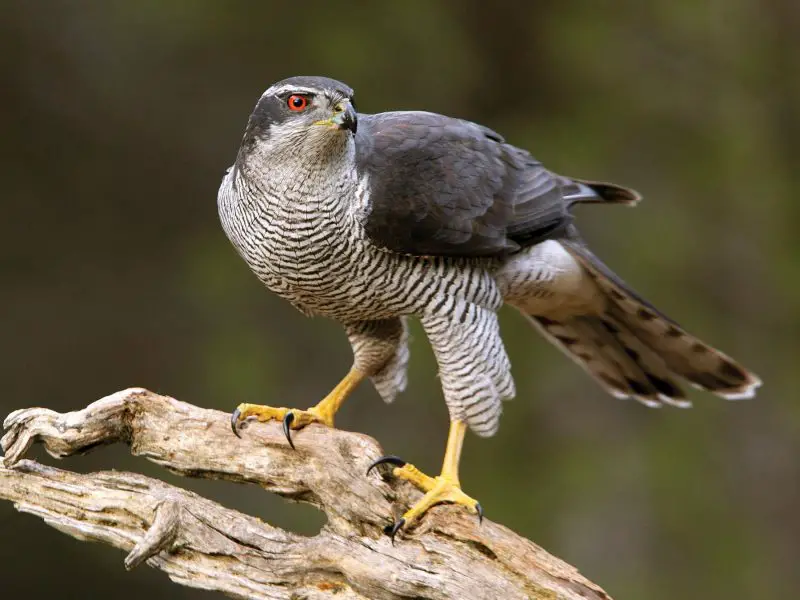
The Northern Goshawk is the largest and most powerful accipiter in North America. It has a robust build, broad wings, and a long, rounded tail. Adults are slate gray with pale underparts and a prominent white eyebrow stripe over fierce-looking red eyes. Juveniles are brown with streaked bellies. Adults can reach lengths of 20 to 26 inches, with wingspans of 40 to 46 inches.
This elusive raptor is a fierce and determined predator of deep forests. It is known for sudden, high-speed pursuits through dense woodland, capable of chasing down prey with astonishing precision. Goshawks are secretive and prefer remote tracts of mature coniferous or mixed forest, making them difficult to spot outside of breeding territories.
Northern Goshawks prey on a wide range of animals, including squirrels, rabbits, grouse, crows, and even other hawks. They build large nests high in trees, often reusing the same site for years. In Pennsylvania, they are uncommon but do breed in the northern tier and the Allegheny Plateau. Sightings increase slightly during migration, though they are still rare.
Goshawks are known for aggressively defending their nests—even against humans who come too close. Fun fact: In medieval falconry, the Northern Goshawk was a favorite of nobles due to its boldness and strength in hunting larger quarry like hares and pheasants.
Swainson’s Hawk (Buteo swainsoni)
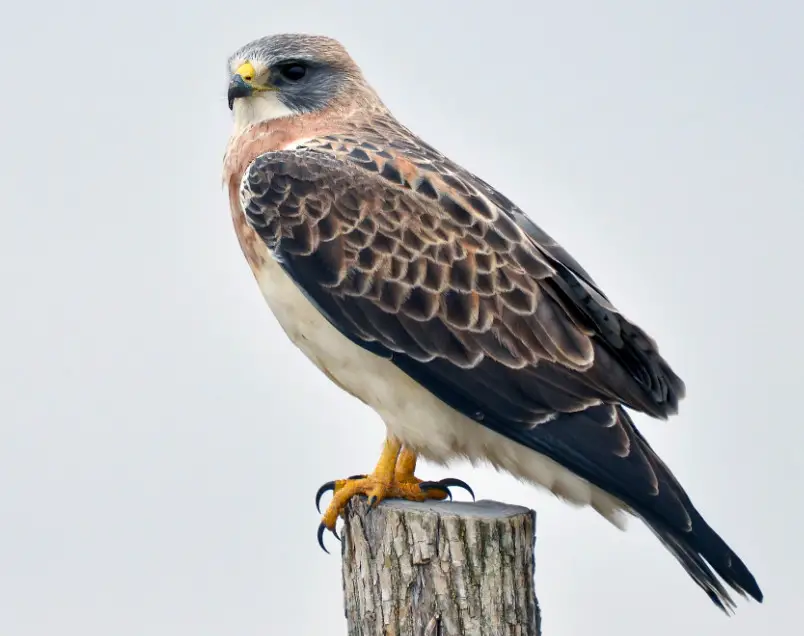
Swainson’s Hawk is a medium-sized hawk more commonly found in the western U.S., but it occasionally appears in Pennsylvania during migration, making it a notable sighting for birders. This slender hawk has long, pointed wings and a short tail. It is usually light below with a dark chest band and has a pale face with a dark crown. Adults measure around 18 to 22 inches long, with wingspans up to 54 inches.
These hawks favor open country, such as grasslands and agricultural fields. They are long-distance migrants, breeding in western North America and wintering as far south as Argentina. During migration, they form large kettles similar to Broad-winged Hawks, sometimes joining mixed-species groups.
Swainson’s Hawks feed on small mammals, reptiles, and birds during the breeding season but switch almost entirely to insects, especially grasshoppers and dragonflies, during migration. This dietary shift is rare among hawks and allows them to travel in large numbers without depleting vertebrate populations.
In Pennsylvania, they are rare visitors during fall migration, most often seen by experienced hawk watchers at locations like Hawk Mountain. Fun fact: Because of their massive migratory route, Swainson’s Hawks experience two summers per year—one in North America and one in South America.
Ferruginous Hawk (Buteo regalis)
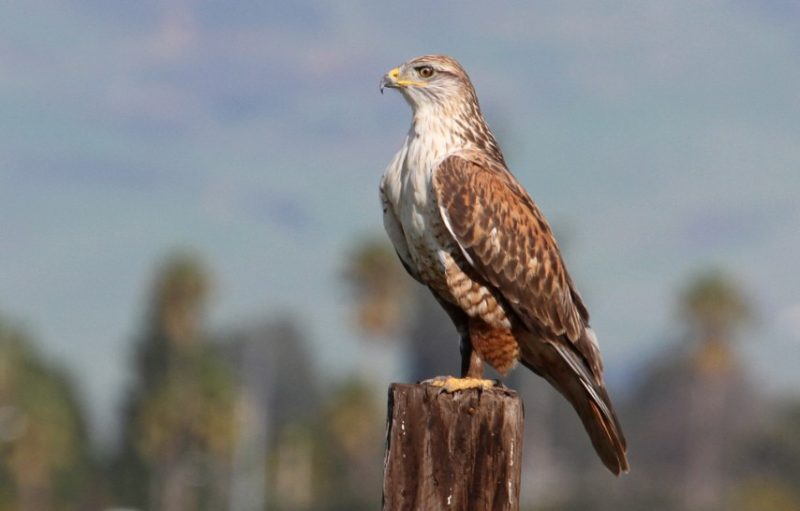
The Ferruginous Hawk is the largest hawk species in North America, though it is extremely rare in Pennsylvania. Its name comes from the rusty (ferruginous) coloration found on its back and legs. This hawk has long, broad wings, a large head, and pale underparts with dark leg feathers that create a “V” shape when seen from below. Adults measure 22 to 27 inches in length, with wingspans of up to 56 inches.
Ferruginous Hawks inhabit open spaces in the western U.S., including prairies, deserts, and grasslands. They are built for wide, open country and rarely venture into forests. Their flight is graceful and powerful, often soaring with flat wings and hunting over vast fields.
Their diet consists mainly of small mammals like prairie dogs, ground squirrels, and rabbits. They hunt from perches or by soaring low over the ground. Occasionally, they work in loose pairs, which is unusual for most raptors. While they do not breed or winter in Pennsylvania, rare individuals have been spotted during migration or irruptions.
Spotting a Ferruginous Hawk in Pennsylvania is a remarkable event and highly sought-after by serious birders. Fun fact: Unlike many other hawks, the Ferruginous Hawk has feathered legs all the way down to the toes—similar to an eagle—giving it a bulky, majestic appearance.
FAQs About Hawks in Pennsylvania
How many types of hawks live in Pennsylvania?
Pennsylvania is home to at least 10 regularly observed hawk species, including common year-round residents like the Red-tailed Hawk and seasonal migrants such as the Broad-winged Hawk and Rough-legged Hawk.
What is the most common hawk in Pennsylvania?
The Red-tailed Hawk is the most widespread and easily recognized hawk in Pennsylvania. It is often seen soaring above roadsides, perched on utility poles, or circling high over open fields.
Are hawks dangerous to pets or people?
Hawks in Pennsylvania are not dangerous to humans and rarely attack pets. However, small animals like chickens, rabbits, or very small dogs may be at risk, especially from larger species like the Red-tailed or Cooper’s Hawk.
Where can I see hawks in Pennsylvania?
Hawks can be seen throughout the state, but popular birding locations include Hawk Mountain Sanctuary, Waggoner’s Gap, and other ridgetop sites during fall migration. Open fields, forest edges, and wetlands also attract many species.
Do hawks stay in Pennsylvania year-round?
Some hawks, like the Red-tailed, Cooper’s, and Red-shouldered Hawks, are year-round residents. Others, like the Broad-winged and Rough-legged Hawks, are seasonal migrants that either pass through or winter in the state.
What do hawks eat in Pennsylvania?
Hawks in Pennsylvania eat a variety of prey including mice, voles, birds, squirrels, snakes, and insects. Each species has its preferred diet based on size, habitat, and hunting behavior.
Are hawks protected in Pennsylvania?
Yes, all native hawks are protected under state and federal laws, including the Migratory Bird Treaty Act. It is illegal to harm, trap, or kill hawks without special permits.
How can I tell the difference between hawk species?
Key differences include size, tail shape, wing shape, flight style, and habitat preference. For example, Red-tailed Hawks have a broad red tail, while Sharp-shinned Hawks have a square-tipped tail and hunt in quick bursts through trees.
Do hawks build nests in Pennsylvania?
Yes. Most hawks in Pennsylvania build nests high in trees, though some species, like the Northern Harrier, nest on the ground. Nests are usually built with sticks and reused or renovated each breeding season.
What’s the best time to see hawk migration in Pennsylvania?
The best time is during fall migration, especially from September through November. Locations like Hawk Mountain provide excellent viewing of Broad-winged Hawks and other raptors riding thermals in large numbers.

